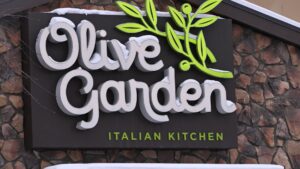Darden Restaurants: Navigating Challenges in a Tough Quarter
At Extreme Investor Network, we keep our finger on the pulse of the restaurant industry, and Darden Restaurants (NYSE: DRI) recently made headlines that warrant our attention. On Thursday, the company unveiled its latest fiscal quarter results, which, while not as strong as expected, sparked a 5% rise in share value. Here’s an in-depth look at what’s happening at Darden and what it could mean for investors.
Key Highlights from the Earnings Report
Darden reported weaker-than-anticipated sales primarily driven by underperformance at its flagship brands, Olive Garden and LongHorn Steakhouse. The key figures are indicative of this trend:
-
Earnings per Share: Darden reported an adjusted EPS of $2.80, exceeding analyst forecasts of $2.79. However, it is essential to note that this figure was boosted by one-time expenses related to the acquisition of Chuy’s, as without those costs, the earnings result would have been slightly lower.
- Revenue: The company posted revenues of $3.16 billion, falling short of analyst expectations of $3.21 billion. A key factor for this was a disappointing same-store sales increase of 0.7%, which lagged behind the anticipated growth of 1.7%.
Weathering the Storm
Executives attribute the slowdown primarily to inclement winter weather, including significant low temperatures and snowstorms, which dissuaded many consumers from dining out. However, there’s a silver lining; when isolating external factors like weather, same-store sales growth across all four of Darden’s segments showed potential improvement. Importantly, CEO Rick Cardenas noted that despite general consumer reluctance, as long as incomes continue to outpace inflation, spending in the casual dining sector is likely to remain stable.
Brand Performance Insights
Both Olive Garden and LongHorn Steakhouse struggled during the quarter, with Olive Garden reporting a meager same-store sales increase of 0.6%, far less than the 1.5% anticipated. LongHorn also fell short, with a growth of only 2.6% against expectations of 5.0%. However, there’s positive momentum in delivery services for Olive Garden, which recently partnered with Uber Direct. Delivery customers have shown a tendency to spend 20% more than average curbside orders, resulting in a consistent increase in delivery orders over recent weeks. Cardenas revealed that pilot restaurants featured delivery services generating about 2.5% of sales, a number that is steadily rising.
Fine Dining and the Broader Segment Outlook
While the casual dining segment faced its challenges, Darden’s fine dining segment, which includes upscale brands like The Capital Grille and Ruth’s Chris Steak House, recorded a slight decline in same-store sales by 0.8%, experiencing what CFO Raj Vennam described as "persistent check management" post-holidays. It’s clear that this segment is seeing variability, suggesting consumers might be recalibrating their dining preferences and spending.
Additionally, other casual brands in Darden’s portfolio, including Cheddar’s Scratch Kitchen and Yard House, reported a 0.4% decline in same-store sales, underlining the broader challenge facing casual dining establishments in a fluctuating economic climate.
Future Outlook
Despite the challenges in the recent quarter, Darden remains committed to maintaining its full-year forecasts, reiterating revenue expectations of $12.1 billion and adjusting the outlook for earnings per share slightly downward to a range of $9.45 to $9.52. Looking forward, Darden will incorporate results from Chuy’s in its fiscal 2025 outlook, though these numbers won’t play into same-store sales metrics until Q4 of 2026.
Conclusion
Investors should keep a close eye on Darden Restaurants as it navigates the complexities of the current dining landscape. The company’s resilient ability to maintain full-year projections, coupled with an uptick in delivery services, showcases strategic adaptability. For readers seeking to understand the dynamic nature of the restaurant industry and the potential impacts on investment, keeping up with developments through Extreme Investor Network offers an invaluable perspective.
As we monitor Darden’s evolution, it is clear that while immediate challenges persist, long-term strategies focused on improving guest experiences and expanding service channels could be key turning points for growth. Stay tuned as we continue to track these crucial market movements.

